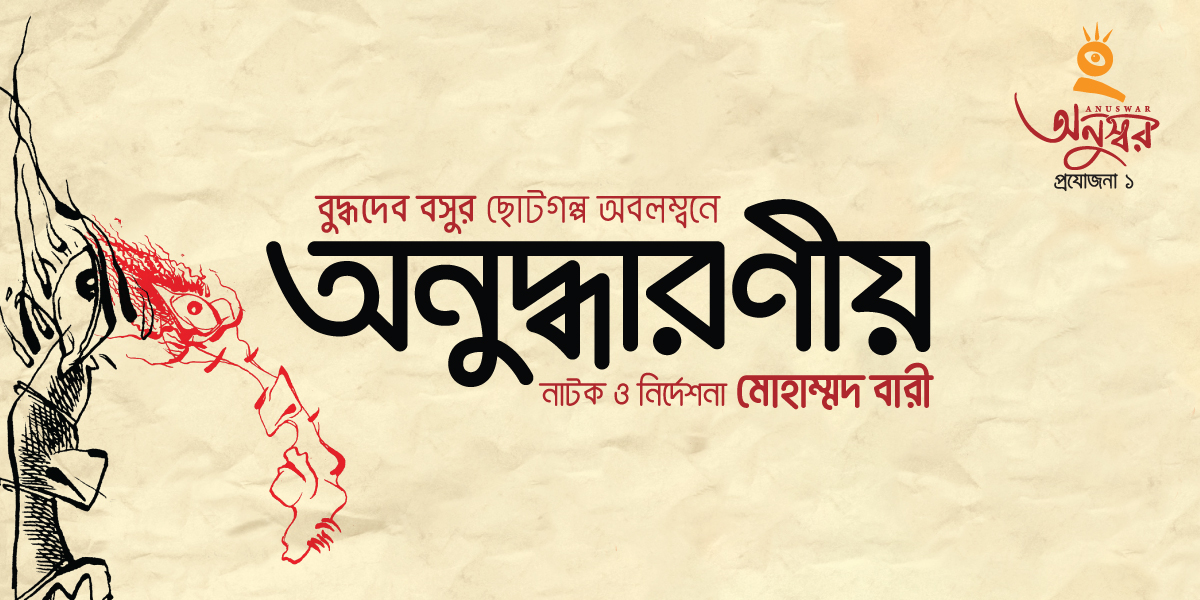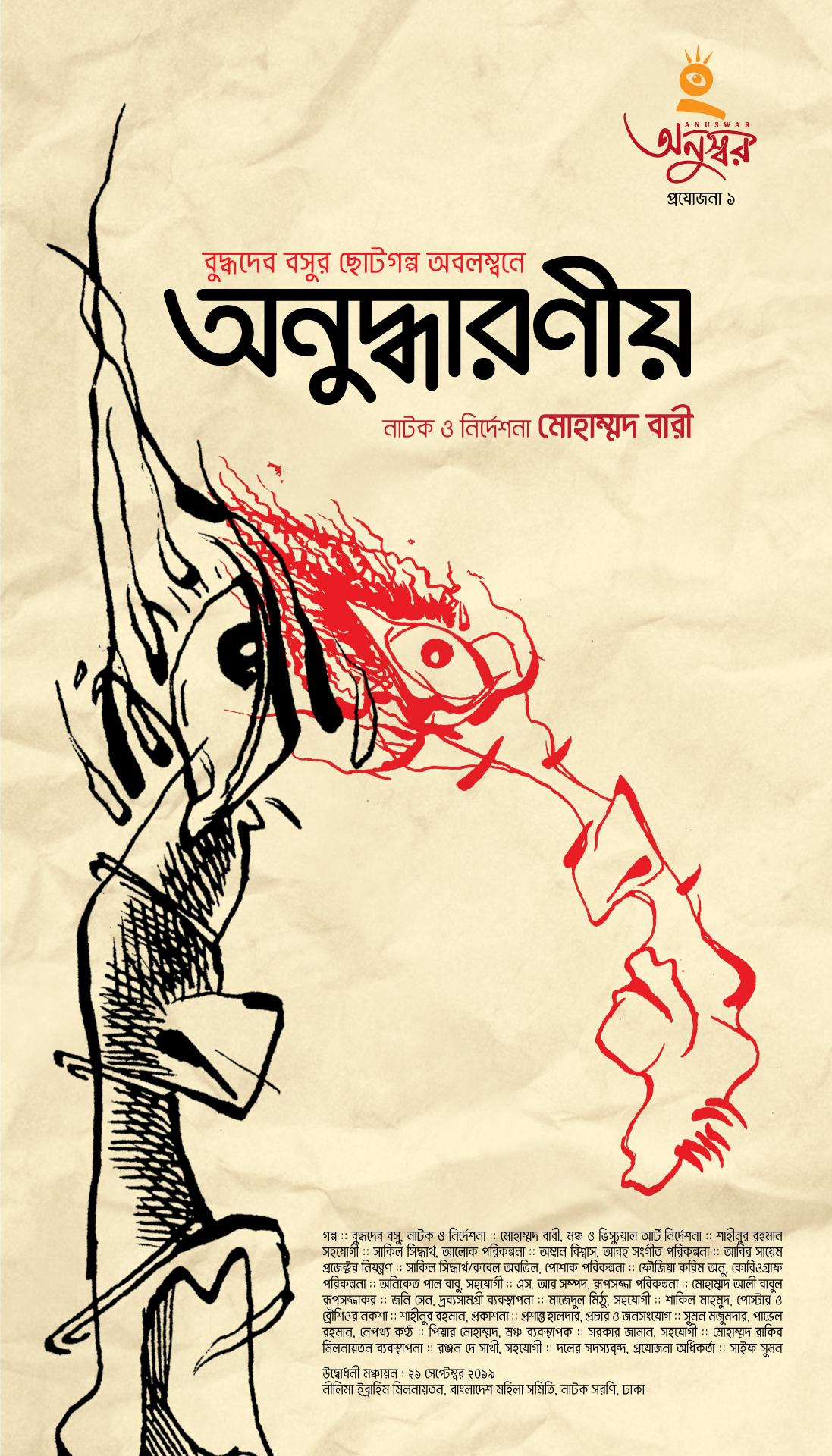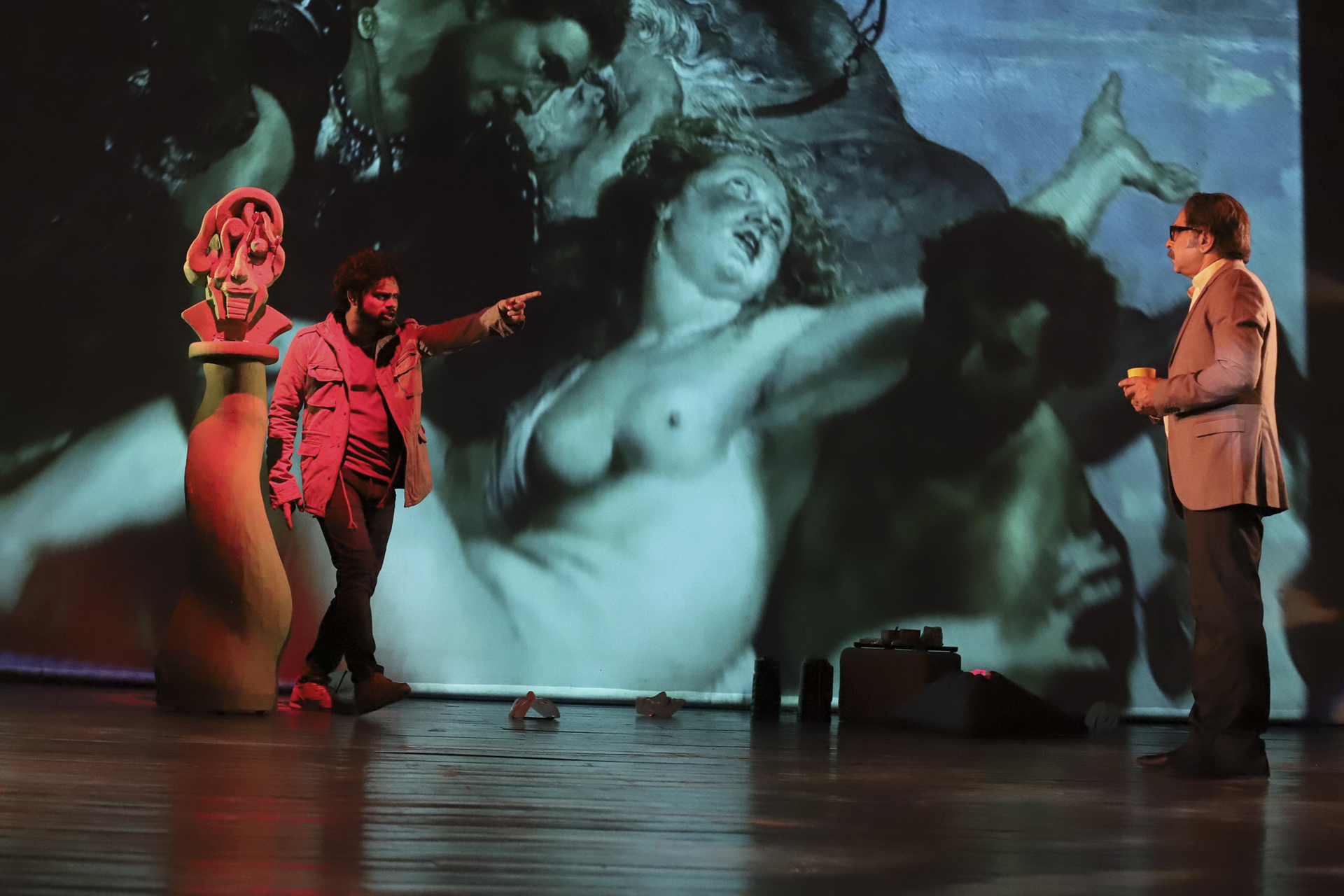
Anuddharaniya
“Anuddharaniya” is the story of the revolt of youthful romanticism rising against institutionalism. This conflict is carried through two diametrically opposed characters: the poet and the poet’s admirer Amit. From a realistic point of view, the poet is accused of empty emotionalism and conformism. Although the poet reaches the highest peak of fame, Amit accuses the poet of barren intellectualism. So, one day Amit, the poet’s admirer, abducts the ‘fallen’ poet and brings him to a secret den. Amit’s intention is to rescue the poet’s once greatest creations and restore it for the future. There they meet face to face.
A few words from Playwright & Director
While making a reading of Buddhadev Basu’s story “Anuddharaniya”, we come to an unavoidable question – can an ‘artist’ stay outside the perimeter of social reality? Alternately, we can ask – doesn’t an artist have any commitment within the context of social reality? And surely we arrive at the age-old debate: art for art’s sake or art for human need. The artists’ dilemma within the context of this reality has probably given rise to the warped function of art. Art’s social function or the artists’ commitment to the society, both are primordial questions. What function should art and artists play in politics, sociology, and governance? Or, should they at all play a part? It is not impossible for an artist to fall victim to bureaucratic institutionalism when an artist takes side with humans while settling a political question. In such a situation, an artist may not only lose his or her artistic independence, an artist may also commit terrible blunder. In such conflicts, artists’ ‘downfall’ had often been highlighted in the annals of history.
This unsolvable dialectic in “Anuddharaniya” inspired me to write this play. While working on the script, I have tried to depict the poet as a ‘fallen’ artist. While working on the play, I kept thinking that the poet’s confrontation with the uncorrupted and upright youth will make the poet’s final destiny more rational and wide-ranging. I also felt that the poet too could have something to say in defense of his own acts and therefore, I added a few characters and scenes that border on phantasmagoria. However, in the end, I stayed truthful to Buddhadev Basu’s story. Lastly, I have borrowed a few lines from poet Nirendranath Chakravarti’s book on poetics “Kobitar Ki O Keno”, and novelist Shirshendu Mukhopaddhay’s novel “Parthiva.” These lines are now the part of the dialogues in the play.
While offering directorial guideline, I have tried not to disrupt the spontaneity of the play and thus allow the central flow of the story to take hold. I had been immensely inspired by my comrade in art Shahinur Rahman whose visual strides tempted me to make further experiments in this play. We have used a few world-famous paintings in the background creation and we believe that such experiments are in tune with the play’s central elements. True, some of these experiments have fulfilled social commitments, and some did not. We have tried to tread the middle-way between realism and abstraction by finding a chemistry among set, light, costume, choreography, and music. Finally, I can only be utterly grateful to the actor-creators who had accompanied me in my search for creation.
On Stage
Kobi :: Mohammad Bari
Amit :: Mazedul Mithu
Chhaya Kobi :: Farida Lima, Shahnaz Jahan
Chorus :: Mahfuz Sumon, Akib Babu, Rubel Arvil, S.R. Sompod, Sarker Zaman.
Back Stage
Story :: Buddhadeb Basu
Play & Direction :: Mohammad Bari
Stage & Visual Art :: Shahinur Rahman
Associate :: Shakil Siddharth
Light :: Amlan Biswas
Music :: Abir Sayem
Choreography :: Aniket Paul Babu
Costume :: Fauzia Karim Anu
Props Manager :: Mazedul Mithu
Stage Manager :: Nurujjaman Sarker
Production Manager :: Saif Suman






